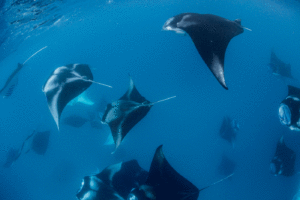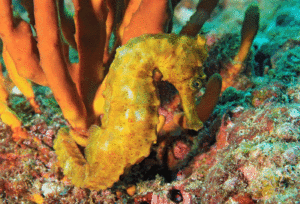Last Saturday night was the worst night of my entire life. Which is saying something because I was pretty sure that Saturday morning was the worst morning of my entire life.
Dreaming deeply snuggled up in my sleeping bag in a backcountry hut on Rakiura/Stewart Island, I jolted awake abruptly as my partner shook my shoulder at 6am so we could go look for kiwi.
Oh, and I have a partner now. He’s French. But I’ll save that story for another day.
Julian had already wandered ahead on the track, and I groggily slipped on my sandals and stumbled towards the outdoor toilet in the bush, a classic long drop (aka a pit latrine), you know those ones you dreaded have to use at summer camp, a toilet seat in an outhouse over a pit of horror.
As I stood up and turned around to shut the toilet seat lid, I head thunk thunk, look down, and realize I DROPPED MY IPHONE IN THE LONG DROP. Oh my god.
Honestly, this is the stuff of nightmares. I hadn’t even had a coffee yet. What do I do?
It had fallen just out of reach but neatly sitting on top of a solid pile of shit and luckily (I guess) the long drop was nearly full. 30 minutes later I emerged with my phone that I managed to rescue using two long sticks and a discarded plastic bag, convinced that I would need therapy to move on from that very traumatic start to the day.

I do not wish that on my worst enemy, and perhaps it is what gave me the strength to survive what was coming next. I suppose nothing builds character quite getting covered in other people’s poo in the wilderness rescuing your damn phone at 6am.
A few hours later we strapped on our heavy packs and made our way down on the Southern Circuit Track; the sun was shining though the wind was strong, and I thought to myself, well things can only go up from here.
We walked for most of the day before setting up camp near a creek at the southern end of Mason Bay, not seeing a single person the whole day. How incredible that we still have such empty and wild places in the world like this.

Later on we wandered out during low tide to some nearby islands exploring. It was a full moon and there were dramatic tides, and I was hoping I might be able to catch my first paua (NZ abalone) in the tide pools without having to dive.
I had forgotten my dive knife in my pack, but still managed to get paua without it, which earned me the honorary title of “the paua whisperer” by local hunters a few days later. As the sun started to set, we watched the twinkling blue sea from the top of the islands, I thought to myself how special this place was. I really fell in love with Rakiura in that moment; what an incredible part of New Zealand.
With tired legs we eventually climbed down and boulder hopped back along the islands towards Mason Bay just as the sun was getting low dreaming of dinner.

As we rounded the corner we saw dark figures moving about in the surf, which we first thought were fur seals or sea lions, common around the beaches on Stewart Island. To our horror, we quickly realized what we were actually seeing were dozens of pilot whales becoming beached in the surf.
Without thinking twice we both dropped everything and ran straight into the water.
Desperately we pushed their big bodies, yelling and eventually trying to pull their tales, doing anything get them into deeper water. Up to our waists in the surf, we were getting thrashed by the big waves along with a few good whacks by the whales violently thrashing around.
But it was useless – the whales were so big and heavy, there was no way two of us could even move one, let alone dozens without help. the realization we could do nothing to save them was the worst feeling I’ve ever experienced in my entire life. It’s also the most alone and abandoned I’ve ever felt.
We were 50 kilometers into a 5 day tramp on the remote west coast of Stewart Island, we hadn’t seen another person in a day.

We were in a place with no people, no service, no help. Nothing.
It took us 2 days of walking plus a water taxi ride for an hour that can only be done at high tide to get to where we were. Remote doesn’t begin to describe it.
But we had to do something. Anything. How can you walk away from something like this?
Julian was a champion and took off running at 8:30pm in his wet sandy clothes and heavy hiking boots almost 15 kilometers back to a base hut up the bay where we knew there were Department of Conservation rangers working who would likely have a radio. We had called in on them the day before to say hello and have a chat, and knew there were meant to still be there.
We didn’t even have time to make a plan, I just told him I would stay at the camp until he returned.

Exhausted after a huge day tramping, he made it in 1.5 hours to raise the alarm, while I stayed with the whales until it got dark. I couldn’t bear to leave them.
Soaked to the bone, I ran around, alternating between sitting with them and throwing water over the drier whales until my hands were numb from the water and wind. I had no idea what to do in this situation, with only the vaguest idea of how whale rescues worked (turns out you don’t grab them by the tails).
There was a small baby, who was probably a meter or so long, almost completely beached. I tried to drag him back into deeper water over and over again, but it kept rebeaching itself. The desperate calls it made while flapping its tale desperately will haunt me for the rest of my life.
What could I do?

I’ll never forget their cries, the way the whales watched me as I sat with them in the water, how they desperately tried to swim but their weight only dug them deeper into the sands.
My heart completely broke.
Finally after a while, it dawned on me that there was no hope; it was almost dark, high tide was in the middle of the night when I figured was their only chance of being refloated, combined with this being one of the most remote places in New Zealand, I knew they would inevitable die.
In that moment, I sank to my knees in the sand, screaming in frustration and sobbing so hard I thought I would puke, with the sound of dozens of dying whales behind me, utterly and completely alone.
Why why why?!


Walking away from them by myself to my tent in the dark, I felt completely numb. The hardest thing I’ve ever done in my life was to walk away from those crying whales in that moment.
I tried to keep myself busy cooking the paua, which I couldn’t finish eating, before giving up and crawling alone into the tent. Luckily a while later, one of the rangers brought Julian back on one of the work quads.
After a sleepless night where we hoped there was someway they might have freed themselves at high tide which would have been around 3am, we went back in the morning.
Our hopes were quickly dashed, we could see from far away they were still there, all 145 of them, spread out over 2 kilometers of sand in two separate groups. This time they were completely beached and quite far from the water’s edge in the sand,
Most of them were still alive. Still moving, their calls still carried along on the wind, their tears creating streams in the sand that was beginning to cake on their faces from the winds.

Whales are such magnificent creatures, and I’ve been privileged enough to dive and spend time with them on my travels around the world. They have an air of humanity and intelligence to them, and it’s always very special to see them in the wild. You can see it in their eyes.
Seeing them dry in the sand evoked a visceral feeling of just being wrong, like seeing a fetus in a jar or a car crash, something incredibly undignified that just wasn’t right.
Like we were caught seeing something we weren’t meant to see, witnesses to something unnatural wasn’t supposed to ever happen.

Again we sat with the whales; there was nothing we could do, their clicks and cries growing softer.
I walked back to the baby I had tried to save the night before who was crying louder than them all. Unclipping my pack, I sank to my knees in the sand and without thinking, I put my hands on its head, wiping the sand away from around its eyes, just saying “I’m sorry” over and over again as my tears dripped down onto its drying skin.
I glanced over and Julian was on the other side of the small group doing the same thing.
There was nothing we could do, nothing anyone could do.
It would take close to 1000 people to save them, more than double the whole population of Rakiura. The logistics of rescuing them in such a remote place was impossible. Between the gear required, the amount of people needed, the tides, the winds and bad weather, time wasn’t on our side. How would we even get the people there?
I would later learn you also can’t just refloat them; pilot whales are incredibly close-knit families, which I saw firsthand, and they won’t leave each other. They will rebeach themselves, so it’s quite strategic about how and which whales are refloated and the order.

The only positive bit was thanks to us raising the alarm so quickly, they were able to euthanize all of the whales shortly afterward. With no trampers headed that way for a while, it could have been days before anyone even know they were there, and it would have been a horrible, painful slow death for them all. I’m glad their suffering was ended, but I am still wracked with guilt over it, and the part I played.
My heart aches for the police, DOC staff, and the rangers who had to deal with this, and I know the Rakiura community is heartbroken over what happened. In many ways I feel like all of New Zealand, and even the world is mourning these whales with me.
It took us two days to walk back out of that part of the island, cutting our trip early. We walked next to every single whale on that beach on our way out. Coming back to reception we were shocked to learn that it was already in the news around the world.
Even though it was the right thing, I feel so horrible that we were the ones that alerted DOC and they had to put them down, which in some twisted way feels like my fault. My heart hurts so much for the man who had that unspeakable job, who I know would have done anything to save them too.
This is an experience that will haunt everyone involved forever.

I got home yesterday and I’ve been oscillating between a million different feelings, from anger, hurt and a profound sadness I don’t know how I will ever shake. How am I supposed to move on?
In a few days everyone will forget this story, continuing on with the rhythm of their lives. I logically understand everything but my heart is still broken.
But I close my eyes and I hear them all again.
I’m probably talking about it too much (like on Instagram) but it feels so tremendous I can’t keep it in, and writing this is weirdly therapeutic and the kind replies are soothing. I’m selfish. Nothing else seems to matter right now. How can I get excited to write again? Photograph again? Create again? I feel tainted and damaged and heartsick. I feel useless and helpless and broken.
I’ll never be the same after this. Some small part of me died on that beach with them.
I don’t know how to cope with this grief. Help me. How do I move forward after this?
Learn more about Project Jonah here, a NZ nonprofit dedicated to rescuing and protecting marine mammals like these pilot whales

The post The worst day of my life: finding 145 stranded whales in New Zealand appeared first on Young Adventuress.

from Young Adventuress https://ift.tt/2KEdfU5
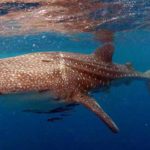
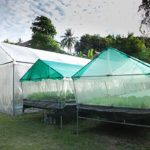

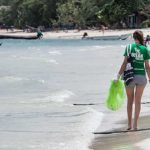
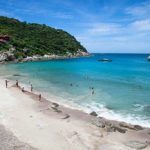
 Photo by
Photo by 














